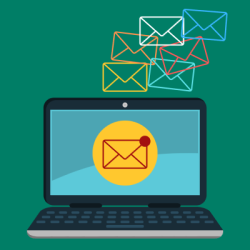Tips and Tricks to Manage Chief Resident Administrative Tasks

As a chief resident, you have many nonclinical duties in addition to your clinical ones. On the surface it may not seem like a lot, but it can get quickly overwhelming if you’re not organized. Consider these tips and tricks from a recent chief resident and an associate program director to stay on top of your administrative duties.
Jump to section:
- Calendar Management
- E-mail Inbox Management
- Meeting Organization
- Electronic Health Record (EHR) Inbox Management
- Addressing To-Do's, Action Items, and General Reminders
Calendar Management
- Link your work calendar to your cell phone and leave your notifications in the ‘on’ position to ensure you arrive on time to any meetings.
- It may be helpful to combine your personal and work calendars (also linked to your cell phone) to ensure a good work–life balance.
E-mail Inbox Management
- Link your work e-mail to your cell phone, but turn off your e-mail notifications to help with work–life balance.
- Timeliness in response to e-mails:
- In general, you should respond to any e-mail within 1 to 2 business days during the normal work week.
- If you are planning to be out of the office or not checking your e-mails during that time, create an automated reply message to notify e-mail senders that they should not expect a response until your return.
- Create a file folder system with folders and subfolders to organize all of your e-mails.
- Some e-mail platforms have flagging systems that enable you to flag higher-priority e-mails.
- If you are unable to respond to a question, you can forward or cc the e-mail to others who may be able to assist with a response.
Meeting Organization
- Prepare in advance for meetings so that they run efficiently.
- If you are the meeting organizer, it is best practice to send an agenda and a reminder e-mail before the meeting so attendees know what to expect.
- Using a notebook or an electronic document, you should keep your own notes during meetings so you can easily refer to them afterward.
- After a meeting, it is best practice to share any to-do's, action items, or meeting minutes with the attendees.
Electronic Health Record (EHR) Inbox Management
- Check your EHR inbox daily when you are on clinical service.
- When you are not on clinical service, you should check your EHR inbox at least once a week to ensure you are co-signing–attesting any documentation and addressing any patient requests, staff messages, and/or lab results.
- You can set a weekly reminder to help you keep up with this task.
- Most EHR systems allow you to set notifications, reminding you of specific dates and times.
- Prioritize prescription requests, messages, and lab results.
- You can mark certain unaddressed items as ‘unread’ as reminders to yourself.
- We recommend downloading the EHR app to your cell phone so that you’re alerted with important notifications (that is, staff messages, critical results) even when you are not working on a clinical service that day.
Addressing To-Do's, Action Items, and General Reminders
- Keep one to-do list. Prioritize your list based on priority, time sensitivity, and tasks that may be more time consuming.
- Block out time on your calendar for tasks that take more time to complete.
- Keep reminders or to-do's by cc-ing or bcc-ing yourself on e-mails.
- Use the e-mail Send Later option to send reminders to yourself or send e-mails at specific times in the future.
- Outlook, Gmail, and other e-mail platforms have this functionality.

William C. Lippert, MD, MPH, FACP
- Assistant Professor of Internal Medicine, Wake Forest University School of Medicine
- Associate Program Director, Internal Medicine Residency
- Department of Internal Medicine / Section on Hospital Medicine, Atrium Health Wake Forest Baptist

Christina M. Rinaldi, DO
- Assistant Professor of Internal Medicine, Wake Forest University School of Medicine
- Department of Internal Medicine / Section on General Internal Medicine, Atrium Health Wake Forest Baptist

